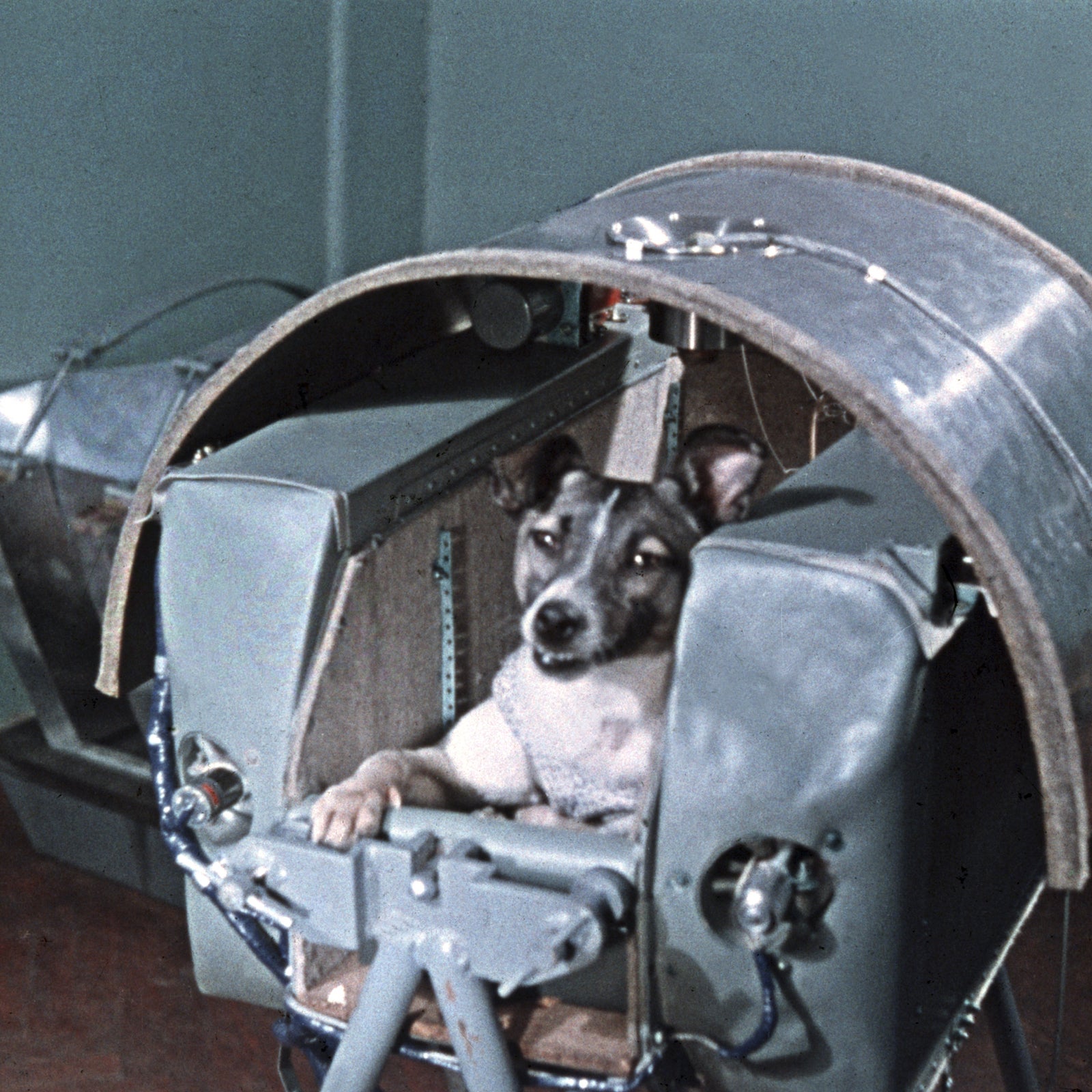It turns out that courage, resourcefulness, sharply honed instinct, and occasional mischievousness serve both humans and beasts well. Like the explorers they accompany, the best adventure dogs have just a hint of masochism in them, enduringÔÇöand even enjoyingÔÇöconditions that many people╠řwouldnÔÇÖt think of bearing.
Here are five who made their mark on history by journeying where humans are few and dangers abound.
Stickeen
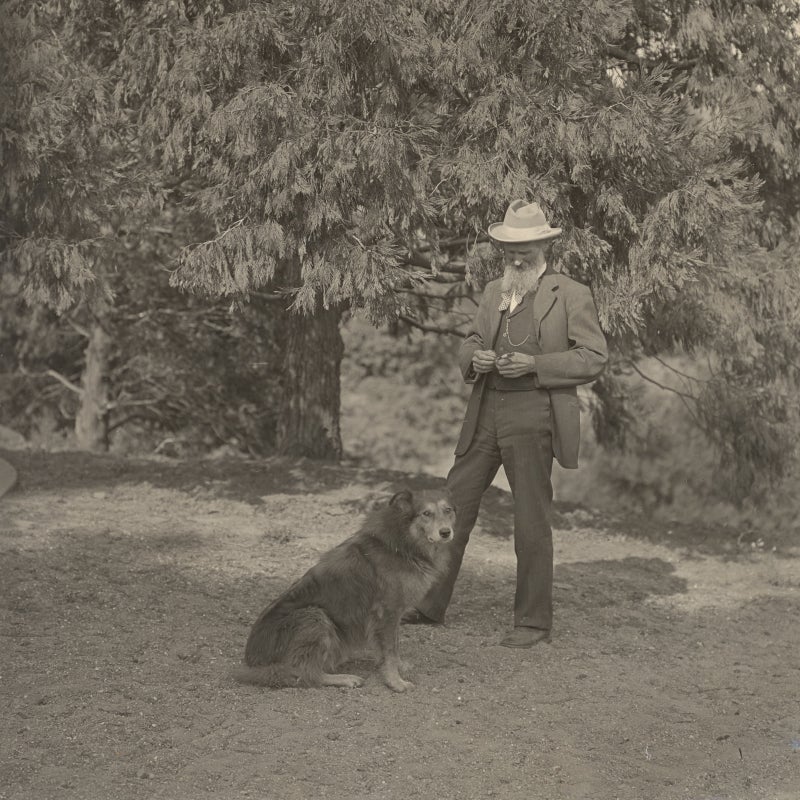
The Unflappable Alaskan Mutt Beloved by John Muir
When Muir began a canoe voyage through southeastern AlaskaÔÇÖs icy fjords in 1890, he only reluctantly accepted the presence of his friendÔÇÖs dog.╠řThe╠řfluffy little guy had╠řthe personality of a ÔÇťsmall, squat, unshakable desert cactus,ÔÇŁ Muir later wrote in the short story named after╠řthe canine, ÔÇťStickeen.ÔÇŁ╠ř
Then Stickeen voluntarily joined Muir on a storm-ravaged day of glacier travel he would later deem ÔÇťthe most memorable of all my wild days.ÔÇŁ It culminated in the crossing of a treacherous snowbridge spanning a 50-foot-wide crevasse that could have easily become an icy grave for both of them. MuirÔÇÖs usually inscrutable companion became despairing and frantic given the peril before him; after surviving the ordeal, he became exultant, ÔÇťpouring forth a tumultuous flood of hysterical cries and sobs and gasping mutterings.ÔÇŁ
Both creatures were changed by the experience. They became inseparable for the remainder of their shared journey. ,╠řMuir declared that their ÔÇťstorm-battle for life brought [Stickeen] to light, and through him as through a window I have ever since been looking with deeper sympathy into all my fellow mortals.ÔÇŁ
Seaman
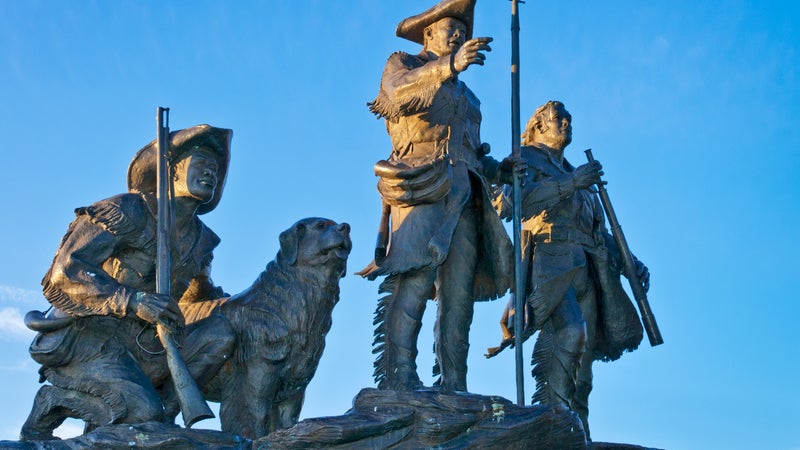
The Newfoundland Who Journeyed West with Lewis and Clark
Purchased by Meriwether Lewis in 1803 for $20 (a sizable sum at the time), Seaman became an important member of the Corps of DiscoveryÔÇÖs 28–month undertaking to explore the Louisiana Purchase and map a water route from the eastern U.S. to the Pacific Ocean.
A skilled hunter and swimmer, Seaman quickly proved his usefulness. He killed and retrieved waterfowl and deer to help feed the corpsÔÇÖ 32 members, alarmed them when grizzlies ranged close, subverted a near disastrous buffalo stampede, and accompanied Sacagawea as she established contact with Native American tribes.
The limited rations, ticks, mosquitoes, prickly pear cacti, and encounters with aggressive wildlife that bedeviled the expeditionÔÇÖs humans also afflicted Seaman. About halfway through their journey, Lewis saved Seaman from almost fatal blood loss by stitching up a bite from an aggrieved beaver the dog had attempted to retrieve.
Since the last journal entry mentioning Seaman was recorded two months before the corps returned to Saint╠řLouis, little is known about what happened to himÔÇöindeed, whether he even survived. However, an entry appearing in an 1814 book, , pertains to a collar that presumably belonged to Seaman. This has led some to conclude that Lewis and his loyal companion enjoyed several years together prior to LewisÔÇÖs death in 1809.
Bothie
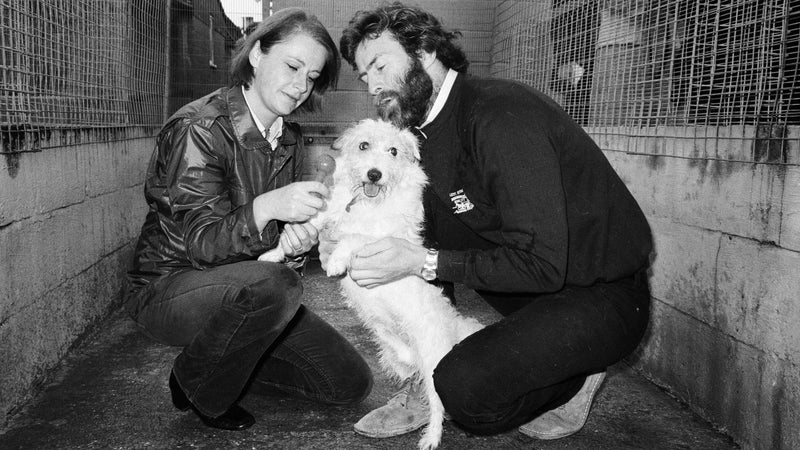
Explorer of the North and South Poles
Reportedly as fearless and amusing as he was stubborn and prone to mischief, Bothie was a╠řJack Russell terrier who became the firstÔÇöÔÇödog to reach both the North and South Poles.
He and his adventurous owners, Ranulph and Virginia Fiennes, undertook a three-year expedition around the world via the poles starting in 1979. Ranulph, deemed the worldÔÇÖs greatest living explorer by the Guinness Book of World Records in 1984, brought Bothie along for their journey, save for the Africa segment (which was too hot).
In a 1985 Los Angeles╠řTimes story about the dogÔÇÖs╠řaccomplishments, Ranulph described him as a ÔÇťcontrary-souled,ÔÇŁ yappy mongrel and ÔÇťa fully fledged renegade.ÔÇŁ╠řBothie rocked a specially made red polar suit and boots to help him survive the extreme cold he encountered, a getup that inspired posters and life-size Bothie toys.
Naughty as he could beÔÇöhe enjoyed liberating frozen eggs from buried food stores in Antarctica, licking them until they melted, and demolishing the stinky treasuresÔÇöRanulph and Virginia felt he brought a sense of normalcy to their 52,000-mile journey. After its completion, they wrote to memorialize his adventures.
Laika
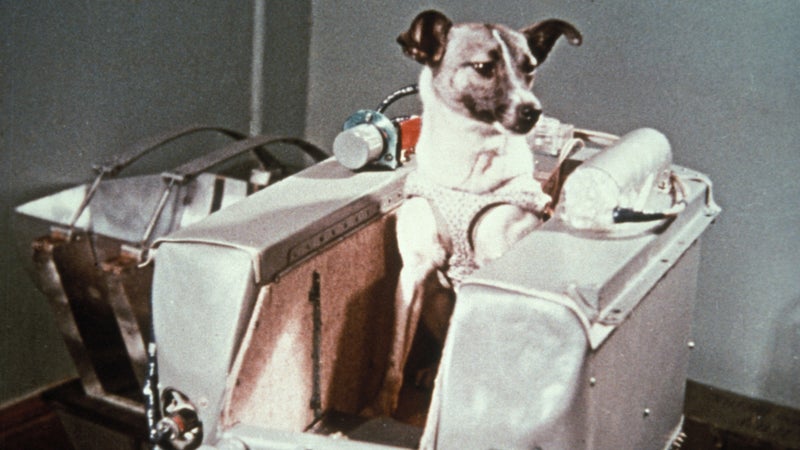
The Moscow Stray Who Became the WorldÔÇÖs First Cosmonaut
Laika, a husky-spitz from the streets of Moscow, was about two years old when she made her to the Soviet UnionÔÇÖs space program. Chosen for her resourcefulness, docile nature, and urination habitsÔÇöshe didnÔÇÖt need to lift a leg in tight quartersÔÇöshe became the first living being to orbit earth.
Prior to the╠řlaunch of Sputnik 2 on November 3, 1957, Laika underwent training to acclimate to increasingly small, pressurized spaces and strong centrifugal force. Doctors surgically implanted electrodes in her body to monitor her heart and respiration rates, blood pressure, and physical movement.
She survived the launch and orbited space for several hours╠řbefore succumbing to heat and/or dehydration, although the official Soviet line for many years was that she lived for closer to a week before eating poisoned food sent into space with her.
Laika was never meant to survive her trip into space; had she lived until Sputnik 2╠řcompleted its 2,570 orbits, she would have burned up upon the satelliteÔÇÖs reentry into the earthÔÇÖs atmosphere. But her sacrifice helped pave the way for the humans to follow, and her name (Russian for ÔÇťbarkerÔÇŁ) and story have inspired everything from band names and books to museum exhibits and statues.
Tschingel
The Peak-Bagging Beagle of the Alps
One-third of a team deemed ÔÇťthe most famous trio in the Alps,ÔÇŁ Tschingel was a consolation gift given to a young American named William Coolidge and his aunt╠řMarguerite ÔÇťMetaÔÇŁ Brevoort by their alpine guide after a failed attempt on Eiger, in Swizerland. Tschingel for her climbing accomplishments, which included 11 first╠řascents, primarily in the Dauphin├ę Alps of southeastern France.
Some of their hardier expeditions took a toll on Tschingel. During the trioÔÇÖs 1871 climb up Eiger via the west ridgeÔÇöthis one successfulÔÇöTschingel was roped up for the final ascent and part of the descent. Bleeding profusely from her paws, she bravely soldiered on, leading the way over rocks and ice, avoiding crevasses along the way, and earning a reputation as ÔÇťa born guide,ÔÇŁ Coolidge later wrote.
Four years later, Tschingel became the first canine to climb Mont Blanc; that same year, the named her an honorary member, recognition that was not bestowed upon BrevoortÔÇöone of her eraÔÇÖs most accomplished mountaineersÔÇösince the club did not open its doors to women for another century.╠ř


